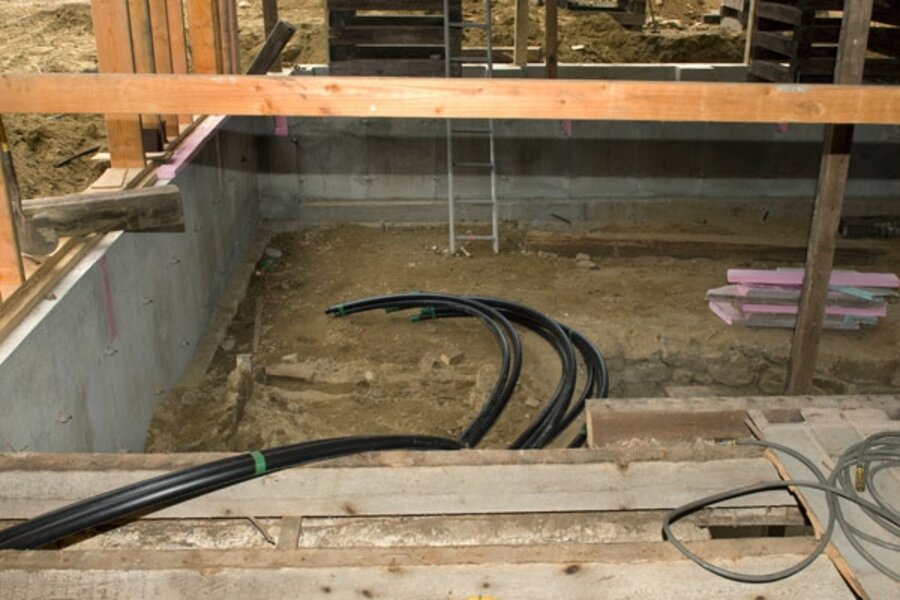Drawbacks of geothermal heating systems
Loading...
I’m sold on geothermal heating. Just check out my previous blog post. But being trained as a journalist, I can’t help but strive for at least some kind of balance. And so, I’ve felt it necessary to outline some of the various problems associated with geothermal residential heating.
First, let’s start with the very basics – the word geothermal itself. Several helpful readers have noted that there’s a bit of confusion about just what it means. So let’s get that cleared up.
Geothermal, as the word is traditionally used, refers to harnessing “energy from ‘hot spots’ in the earth's crust, and can only be employed in locations where these exist,” according to the website Lighthouse.
On the other had, geoexchange, as Lighthouse notes, “uses the relatively constant temperature of the ground to simply moderate a building's temperature.
For example, in the winter, the ground temperature is usually warmer than the air temperature, so heat is pumped from the ground to help heat the building. In the summer, the opposite is the case, and the building can be cooled.”
So, technically, we’ve been talking about a geoexchange system. (I’m still sold on it, even if it does have a different name.) But, like much in the English language in America, meanings evolve and specificity sometimes gets lost.
As it turns out, the “geothermal” is now commonly used as a catchall for both traditional geothermal systems and geoexchange systems, at least according to the International School of Well Drilling.
There are two types of geothermal energy, it explains in one of its training documents [pdf]:
1. High Grade – High-grade geothermal energy is the heat of the earth’s pressure which turns water into steam. Old Faithful at Yellowstone National Park is an excellent example.
2. Low Grade – Low-grade geothermal is the heat within the earth’s crust. This heat is actually stored solar energy.
We will use the terms "low-grade geothermal" or "geothermal" throughout this presentation because it’s the most commonly used.
So, forgive me for being common, but I’m going to continue to refer to the heating system that we’ve chosen as “geothermal,” even though the technically minded are welcome to quibble with me.
Now on to some of the more pedestrian problems with a geothermal heating system:
1. First and foremost, at least from my perspective, are the high upfront costs. The internal works – the heat pump, ducts, electrical, etc., cost about the same as a top of the line, highly efficient traditional oil or gas heating system. But on top of that, you have to add the cost of drilling the wells. In our case, we’re talking an additional $20,000. But, fortunately, there are tax breaks and longterm savings to offset those drilling costs.
2. The second big drawback is that every geothermal system needs a back-up heat system, according to our geo-man Tony Silverio, who says:
The second stage heating system has to be there for one simple reason. The heart and soul of your geothermal system is based on a compressor – like you have in a traditional air conditioning system.
If the compressor in an air conditioner goes out, no big deal; you don’t have air conditioning for a couple of days while you wait for the mechanic. In a geo-system if a compressor fails you need heat immediately – especially if it’s a real cold day. And if a compressor is going to fail, it’s going to be when the weather is the coldest and it’s working the hardest.
So what happens then, is the second stage heat kicks on automatically and you have heat until someone comes and fixes the compressor. That’s the whole logic of second stage.
Some geothermal systems, though, which are less expensive and less efficient, also need a back-up system that can kick in when it drops below 25 degrees F. to augment a system that may not be able to handle really frigid temperatures.
3. The final big drawback I’ve been able to gather concerns maintenance. Every seven to 10 years, the pipes in the system have to be “purged and flushed.” That costs about $1,500. Every year, air filters have to be changed as well. If you choose to hire a company to do it twice a year, add another $200 annually. But that does not deter me. Considering that I now pay about $230 a year for a service contract for my oil burner, and thousands every year for oil, I still think geothermal is a cost-effective – to say nothing of environmentally responsible – choice.
I’m sure that many of you know much more about this than I do, and if I’m missing some big problems that I and others should be aware of, please, comment away!
In the meantime, in my next post, I’ll be writing about the windows we have decided to use.
Editor's note: Alexandra Marks will be blogging twice a week about her green and budget-friendly restoration of a 1902 farmhouse in Connecticut. See a photo gallery of the early days of the project by clicking here. You can read all she's written about the project so far by clicking here and then looking for Sheep Dog Hollow under Topics on the right side of the page.
You'll find numerous articles about the environment at the Monitor’s main environment page. Also, check out our Bright Green blog archive and our RSS feed.





